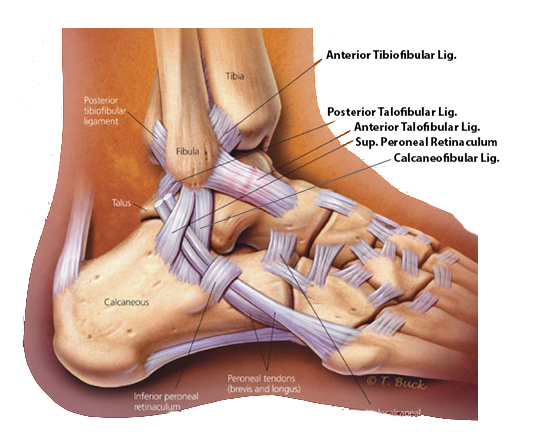
The ankle is made up of many connective tissues that connect the bones in the area. Although these connective tissues are flexible, they can be damaged as a result of trauma. The most common ankle ligament injuries are ankle sprains. This damage, which is frequently seen especially in athletes, usually resolves spontaneously and does not require surgical treatment. However, it is very important for the patient to be conscious in this process and to take the right steps.
An ankle sprain is one of the most common ligament injuries. It usually occurs as a result of damage to the anterior part of the external lateral ligaments. ankle joint; It consists of three bones called the shin, reed, and talus. Connective tissues connect these bones and allow the joint to move in a healthy way.
Although these connective tissues are quite flexible, they can be damaged during extreme stress. The tearing of the ligaments as a result of the wrong movement of the ankle leads to the discomfort known as “ankle sprain”.
Ankle sprains are common, especially in athletes. Not wearing suitable shoes with the ground, playing sports on wet ground, or not warming up enough before exercise can cause sprains.
Ankle sprains occur as a result of the foot turning inward or outward. For this reason, it can happen even when walking on an uneven ground, except for sports. First aid for ankle sprain is usually done by the person himself.
Symptoms of ankle injuries can vary depending on the type and severity of the injury.
Symptoms of ankle injuries may be similar to each other. In particular, the symptoms of sprains and fractures are very similar to each other. An orthopedic and traumatology doctor should be consulted without delay in order to determine the exact problem experienced.
The first sign after ankle sprain is swelling. Movement of the joint is painful as edema occurs around the ankle. The person may step on their feet but have difficulty walking. A few days after the sprain, bruising may also occur in the area.
In ankle ligament injuries, complaints regress in about 2 weeks. The person can move his wrist comfortably and return to his daily life. However, if the pain and edema continue and the foot cannot be stepped on, an orthopedic specialist should be consulted.
Treatment of ankle injuries varies according to the degree and type of injury. The first aim in ankle injuries is to return the patient to his old daily activities as soon as possible.
These treatments are the first practices that should be standardized in ankle injuries. A patient with a sprained ankle or trauma injury can apply these treatments at home when he or she can step on his foot.
The application of hot water applied in ankle injuries among the public can lead to inconvenient results. In case of ankle sprain or acute trauma, heat application should be avoided.
Cold application is always helpful. The application of heat can create a feeling of relief from the beginning, but the heat can increase the swelling due to bleeding by causing dilation of the veins.
There is no harm in applying olive oil, St. John’s Wort oil or pain relief creams to the sprained area.
However, in cases where the complaints do not go away, the degree of ankle injury can be advanced. Especially in 3rd degree injuries, if appropriate treatments are not applied, problems related to dysfunction of the ligaments in the ankle may occur in the future.
In advanced ankle injuries, physical therapy applications may be preferred according to the type and severity of the injury.
What is Varicocele? Varicocele is the varicose veins that drain the blood in the testicles,…
What is Hemorrhoids ? It is a disease caused by the loosening of the veins…
What Is Monkeypox Virus? Symptoms and Ways of Transmission! The monkeypox virus, which has been…
What is Pelvic Venous Congestion Syndrome? (Failures Observed in Ovarian/Testicular Veins) What is Pelvic Venous…
What is Myoma ? Myoma, is a benign tumor arising from the uterine muscles. It…
What is Back Lift? Back stretching, excessive weight gain and aging may cause you to…